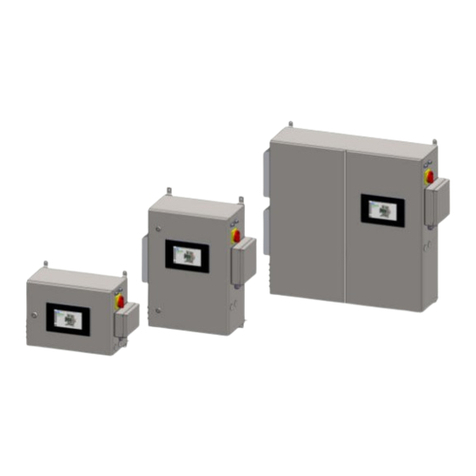
Table of Contents
5.2.4 Data transmission of signals..................................................................................24
5.2.4.1 Profibus...................................................................................................................24
5.2.4.2 Analogue outputs....................................................................................................25
5.2.5 Information on Cable and Lines Routing................................................................25
5.2.6 Connection of analysis gas lines............................................................................26
5.2.6.1 Gas Inlets AwiECO.................................................................................................26
5.2.6.2 Extraction Points for Analysis Gas.........................................................................27
5.2.6.3 Laying of Analysis Gas Lines.................................................................................28
5.2.6.4 Exhaust air – Discharge of the Measuring Gas.....................................................28
5.2.7 Installation of Humidity and Flow Sensor AwiFLOW..............................................30
5.2.8 Initial Operation...................................................................................................... 32
6 Handling of the Gas Analysis System....................................................................................33
6.1 Maintenance........................................................................................................... 33
6.1.1 Cleaning..................................................................................................................33
6.1.2 Calibration...............................................................................................................34
6.1.3 Hydrogen sulphide filter..........................................................................................34
6.1.4 Detonation Flame Arrester.....................................................................................34
6.1.5 Connecting Tubes.................................................................................................. 34
6.1.6 Condensate traps................................................................................................... 35
6.2 Replacing a Fuse................................................................................................... 35
6.2.1 Specification Fuse F1 (Input Voltage 100–240 VAC).............................................35
6.2.2 Specification Fuse F2 (Power Supply Unit Output Voltage 24 VDC)..................... 35
6.3 Spare Parts List......................................................................................................35
6.4 Disposal.................................................................................................................. 36
6.5 Product Liability...................................................................................................... 36
7 Technical Data and Sensor Accuracy.................................................................................... 37
7.1 Technical Data........................................................................................................37
7.2 Accuracy, Service Life and Calibration of the Sensors..........................................37
8 Annex.......................................................................................................................................40
8.1 CE Declarations of Conformity...............................................................................40
8.1.1 CE Declaration of Conformity for Devices Not Intended to be Installed in an Ex-
Zone........................................................................................................................41
8.1.2 CE Declaration of Conformity for Devices Intended to be Installed in an Ex-
Zone........................................................................................................................42
8.2 IEC - Conformity Declaration................................................................................. 43
8.3 Certificat TÜV SÜD UL - CSA 61010-1-2012........................................................44
4





























